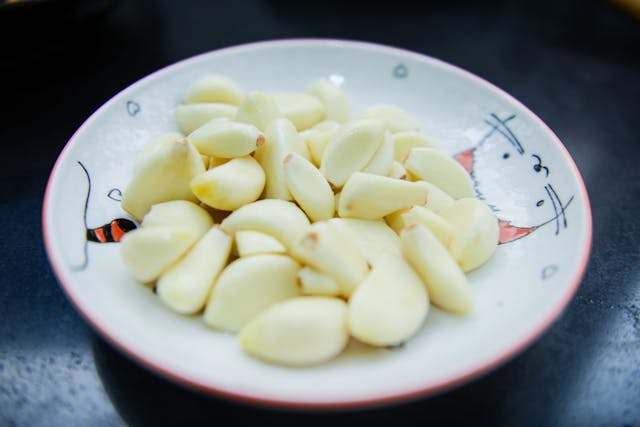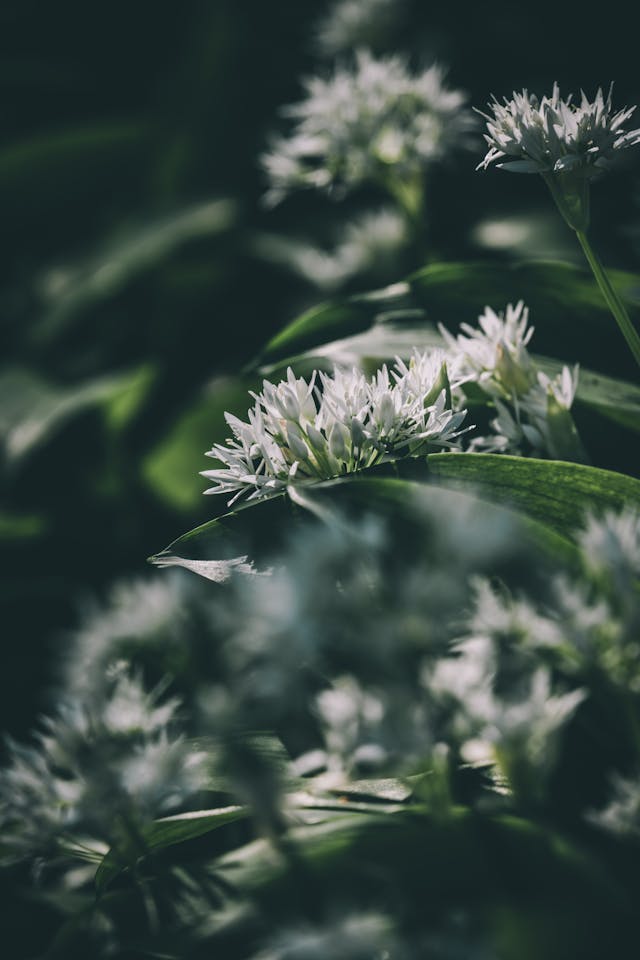Garlic, with its intense aroma and robust flavor, is more than just a culinary staple. This humble bulb has been revered for centuries for its potent healing properties and its ease of cultivation, making it a must-have in any healing garden. In this comprehensive exploration, we will delve into the simplicity of growing garlic, its versatile uses, the myriad benefits it offers to health and well-being, both physical and mental, the rich history behind its use, its wild growth, and the diverse cultures that have harnessed its power.
Growing Garlic: A Simple Addition to Your Healing Garden
One of the greatest appeals of garlic is how effortlessly it can be grown, even by novice gardeners. Garlic thrives in a variety of climates and soil types, making it an adaptable and resilient crop. To start, all you need is a bulb of garlic from your local grocery store or a nursery. Separate the cloves, leaving their papery skins intact, and plant them about two inches deep in well-drained soil. Ensure each clove is spaced about six inches apart to allow room for growth.
Garlic prefers full sun but can tolerate partial shade, making it a versatile addition to any garden layout. With regular watering and a bit of patience, you will see green shoots emerge, eventually forming bulbs ready for harvest in about six to eight months. The best time to plant garlic is in the fall, allowing it to establish roots before the winter frost, although spring planting is also possible in milder climates. Once harvested, garlic bulbs can be stored for several months, providing a long-lasting supply of this medicinal herb.

Versatile Uses of Garlic
Garlic’s versatility extends far beyond the kitchen. Its medicinal uses are vast and varied, ranging from being a natural antibiotic to a potent antioxidant. Garlic can be consumed raw, cooked, or in supplement form, each method offering unique benefits. Raw garlic is the most potent, as cooking can reduce some of its beneficial compounds, such as allicin. However, even cooked garlic retains significant health benefits and enhances the flavor of countless dishes.
In addition to its culinary and medicinal uses, garlic can be used in natural pest control within your garden. Planting garlic near other crops can deter pests such as aphids and caterpillars, thanks to its strong smell and natural compounds.
Health and Well-Being Benefits
Garlic is renowned for its extensive health benefits, particularly for physical health. Rich in vitamins C and B6, manganese, and selenium, garlic is a powerhouse of essential nutrients. Its most celebrated compound, allicin, is released when garlic is crushed or chopped, providing powerful antimicrobial and antifungal properties.
One of the most well-documented benefits of garlic is its ability to support cardiovascular health. Studies have shown that regular consumption of garlic can help reduce blood pressure and cholesterol levels, thereby reducing the risk of heart disease (Ried et al., 2013). Additionally, garlic has been found to have anti-inflammatory properties, making it beneficial for conditions such as arthritis.
Garlic also boosts the immune system, helping the body fight infections more effectively. A study published in the journal Advances in Therapy found that participants who took garlic supplements were less likely to catch a cold and recover faster if they did (Josling, 2001). This immune-boosting property is precious during cold and flu se
The benefits of garlic are not limited to physical health; it also has a positive impact on mental well-being. Garlic contains antioxidants that protect against cell damage and aging, which is crucial for maintaining brain health. A study published in the Journal of Nutrition found that garlic supplementation could improve cognitive function and reduce the risk of Alzheimer’s disease and dementia (Borek, 2006).
Moreover, garlic’s ability to reduce stress and fatigue has been recognized for centuries. It contains compounds that can help lower cortisol levels, the hormone responsible for stress, and promote a sense of calm and relaxation. Incorporating garlic into your diet can thus contribute to better overall mental health and resilience against stress.
The Rich History of Garlic Use
Garlic’s use as a healing herb dates back thousands of years, with evidence of its cultivation and medicinal use found in ancient civilizations across the globe. The ancient Egyptians revered garlic for its health benefits, and it was often buried with pharaohs to ensure their well-being in the afterlife. Garlic was also a staple in the diet of Egyptian laborers, believed to enhance strength and endurance.
In ancient Greece, garlic was used by soldiers to boost their courage and stamina during battle. Hippocrates, the father of modern medicine, prescribed garlic for a variety of ailments, including respiratory problems, parasites, poor digestion, and fatigue.
The Romans also valued garlic for its medicinal properties, using it to treat wounds and infections. Throughout the Middle Ages, garlic was a common remedy for the plague and other infectious diseases, thanks to its potent antimicrobial effects.
Garlic’s medicinal use continued into the modern era, with Louis Pasteur documenting its antibacterial properties in the 19th century. During both World Wars, garlic was used as an antiseptic to prevent gangrene and treat wounds when conventional medicines were scarce.
Wild Garlic: Nature’s Gift
Garlic does grow wild in many parts of the world, often referred to as “wild garlic” or “ramsons.” Wild garlic is typically found in damp woodlands and shaded areas, identifiable by its broad, green leaves and white, star-shaped flowers. It has a milder flavor compared to cultivated garlic and can be used similarly in cooking and medicine.
Foraging for wild garlic can be a rewarding experience, connecting you with nature and providing a free source of this healing herb. However, it’s essential to properly identify wild garlic, as it can be easily confused with other plants that are toxic, such as lily of the valley. The best way to identify wild garlic is by crushing the leaves and smelling for the distinctive garlic aroma.

Global Usage of Garlic
Garlic has been used by diverse cultures worldwide, each incorporating it into their traditional medicine and cuisine. In China, garlic has been used for over 5,000 years in traditional Chinese medicine to treat respiratory and digestive issues. It is also a key ingredient in many Chinese dishes, adding both flavor and health benefits.
In India, garlic is a staple in Ayurvedic medicine, where it is used to balance the body’s energies and treat various ailments, including respiratory and digestive problems. Indian cuisine also heavily features garlic, enhancing the flavors of curries, dals, and other dishes.
In Mediterranean cultures, garlic is a fundamental component of the diet, contributing to the region’s renowned health benefits. The Mediterranean diet, rich in fruits, vegetables, olive oil, and garlic, is associated with lower rates of heart disease and longer life expectancy.
Scientific Evidence Supporting Garlic’s Benefits
The health benefits of garlic are supported by numerous scientific studies. A meta-analysis published in the Journal of Clinical Hypertension found that garlic supplementation significantly reduces blood pressure in individuals with hypertension (Ried et al., 2015). Another study published in Phytomedicine showed that garlic extract could lower cholesterol levels, providing further evidence of its cardiovascular benefits (Lau, 2001).
Garlic’s antimicrobial properties have been well-documented, with research published in Antimicrobial Agents and Chemotherapy demonstrating its effectiveness against a wide range of bacteria, fungi, and viruses (Ankri and Mirelman, 1999). Additionally, a study in the Journal of Nutrition highlighted garlic’s potential to reduce the risk of certain cancers, thanks to its antioxidant and anti-inflammatory properties (Borek, 2001).
Conclusion
Garlic is truly a gift from nature, offering a simple and effective way to enhance your health and well-being. Whether you grow it in your own garden, forage for it in the wild, or incorporate it into your diet and medicinal practices, garlic provides a myriad of benefits backed by centuries of use and scientific research. Its ability to support both physical and mental health makes it an invaluable addition to any healing regimen. So, why not start growing your own garlic today and unlock the healing power of this remarkable herb?
Love Life x
References
- Ankri, S., & Mirelman, D. (1999). Antimicrobial properties of allicin from garlic. Antimicrobial Agents and Chemotherapy, 43(3), 512-517.
- Borek, C. (2001). Antioxidant health effects of aged garlic extract. Journal of Nutrition, 131(3), 1010S-1015S.
- Borek, C. (2006). Garlic reduces dementia and heart-disease risk. Journal of Nutrition, 136(3), 810S-812S.
- Josling, P. (2001). Preventing the common cold with a garlic supplement: A double-blind, placebo-controlled survey. Advances in Therapy, 18(4), 189-193.
- Lau, B. H. (2001). Suppression of LDL oxidation by garlic. Journal of Nutrition, 131(3), 985S-988S.
- Ried, K., Frank, O. R., & Stocks, N. P. (2013). Aged garlic extract lowers blood pressure in hypertensives: A dose-response trial. European Journal of Clinical Nutrition, 67(1), 64-70.
- Ried, K., Frank, O. R., & Stocks, N. P. (2015). Garlic reduces blood pressure in hypertensive individuals. Journal of Clinical Hypertension, 17(7), 567-571.

